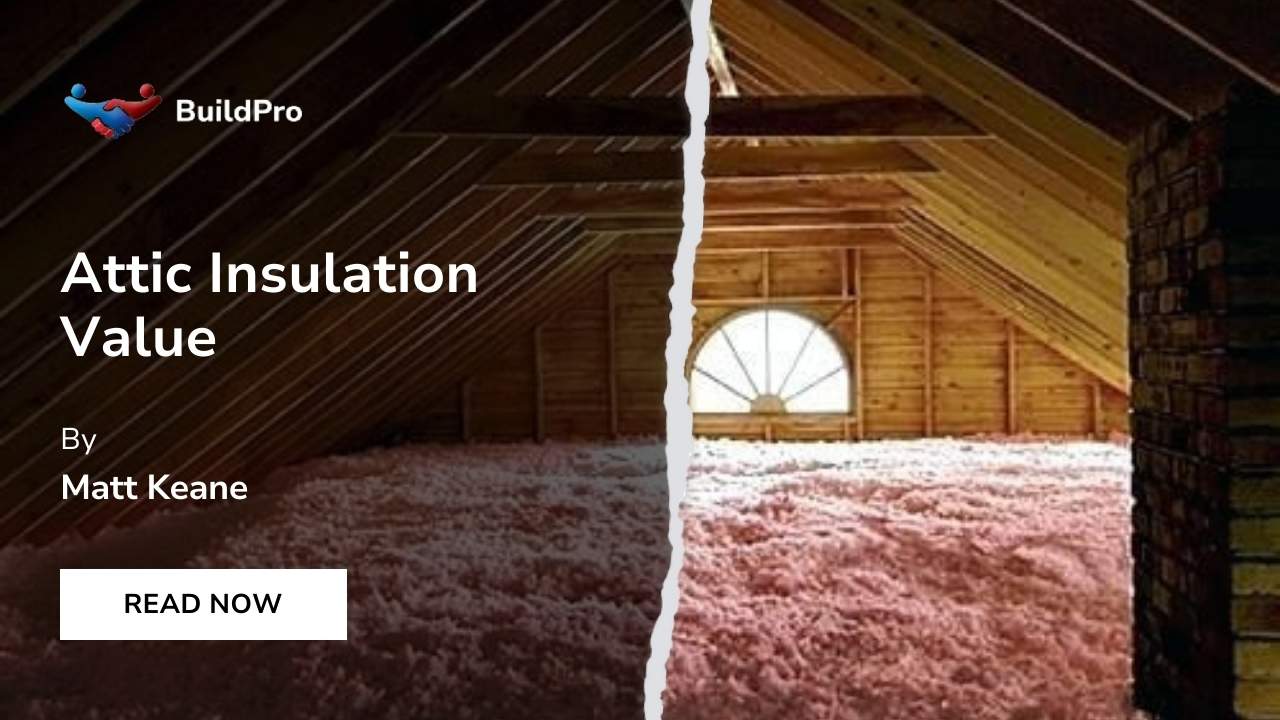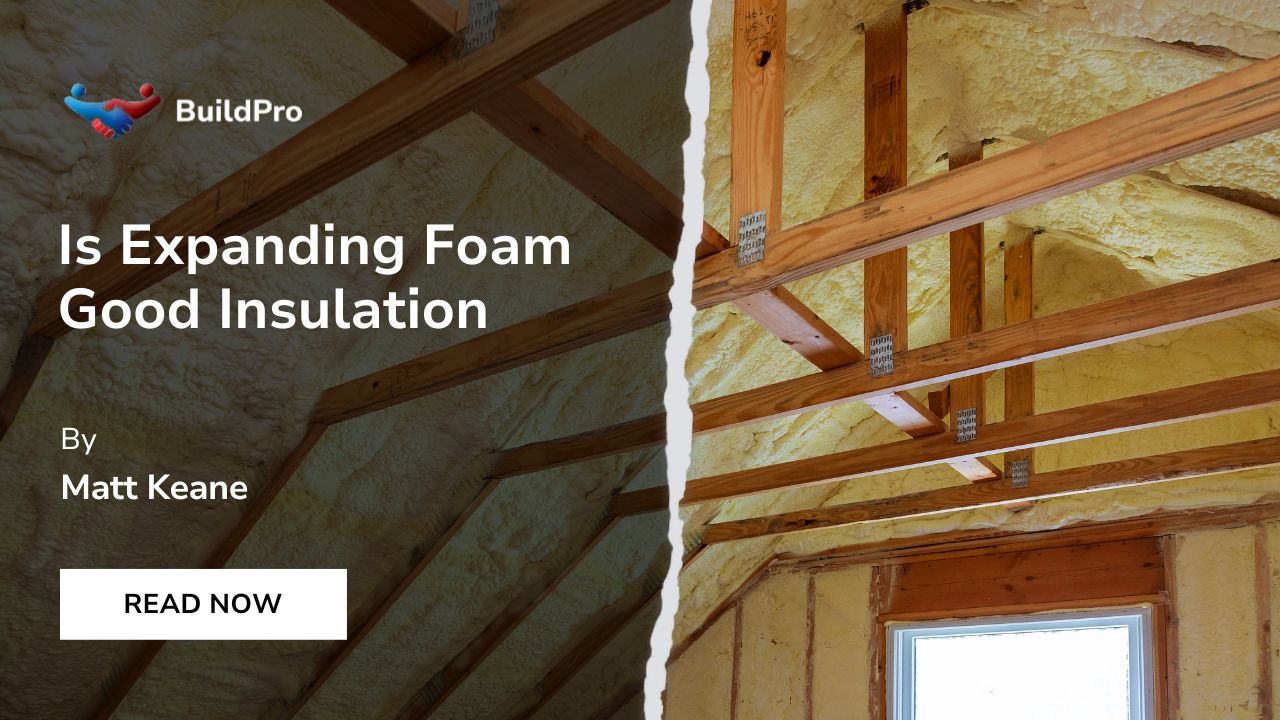The short answer to the question, "Is adding insulation to your attic worth it?" is a resounding 'Yes'. Adding insulation to your attic can save on energy costs, make your home more comfortable and eco-friendly, and even increase your property's value. But the complete answer depends on numerous factors, including your specific house, its location, and the type of insulation used. Dive in with us as we unravel the details in this comprehensive guide.
What is Attic Insulation?
Attic insulation refers to the material used to reduce the amount of heat that escapes from or enters your home through the roof. It functions as a thermal barrier, keeping your home warm during the cold season and cool during the hot season.
Insulation is measured in R-values, a measure of thermal resistance. The higher the R-value, the greater the insulation's effectiveness. In Ireland, where BuildPro is located, the recommended R-value for attic insulation is between R-30 and R-60.
Why is Attic Insulation Important?
Attic insulation is important for several reasons. Firstly, it can substantially lower your energy bills. This is because around 25% of a home's heat is lost through the roof. By insulating the attic, you significantly reduce this heat loss, leading to less reliance on your heating system.
Insulation also ensures a comfortable living environment by maintaining a steady indoor temperature. Moreover, it minimises the risk of condensation in your home, which could lead to issues like mould or dampness. And from an eco-friendly perspective, less energy consumption translates to a smaller carbon footprint.
How Does Attic Insulation Work?
Attic insulation operates on a simple principle – it reduces the rate of heat transfer. All forms of insulation work by slowing down the heat flow from a warmer area to a cooler one. During the winter, this means trapping the heat inside your home, and in the summer, it involves blocking the outside heat from entering. The efficacy of insulation is measured in terms of its 'R-value', which signifies its resistance to heat flow. The higher the R-value, the better the insulation's performance.
What Are the Different Types of Attic Insulation?
There are several types of attic insulation, each with its own unique features, advantages, and drawbacks:
- Batts and Rolls: Made of fibreglass, mineral wool, plastic fibres, or natural fibres, batts and rolls, also known as blanket insulation, are fitted between studs, joists, and beams.
- Loose-Fill or Blown-In: This type consists of small particles of foam, fibreglass, or cellulose and is ideal for adding insulation to existing finished areas, irregularly shaped areas, and around obstacles.
- Spray Foam Insulation: This insulation type is sprayed as a liquid that expands into a solid foam, creating an airtight seal. It is available in open-cell (lower R-value, more affordable) and closed-cell (higher R-value, more expensive) variants.
- Reflective or Radiant Barrier: This type of insulation, mostly aluminium foil, is designed to reduce radiant heat gain rather than insulating against conductive and convective heat flow.
- Rigid Foam Boards: These provide a high insulating value for relatively little thickness and can be used in virtually any area of your home, including the attic.
What are the Benefits of Adding Insulation to Your Attic?
Insulating your attic comes with a multitude of benefits:
- Energy efficiency: Good insulation drastically reduces the amount of energy your home uses for heating and cooling, leading to lower energy bills.
- Comfort: With the temperature being more consistent, your home becomes a more comfortable place to live, with less reliance on air conditioning or heating.
- Soundproofing: Insulation can also help reduce noise from outside, providing a quieter living environment.
- Environmental impact: By lowering your energy consumption, you're directly reducing your carbon footprint, which is a step towards a more sustainable planet.
- Increased property value: A well-insulated home can attract potential buyers, thus increasing your property’s resale value.
How Much Insulation Should You Add to Your Attic?
The amount of insulation you need for your attic depends on the climate in your location and the type of heating and cooling system you have. In general, the colder the climate, the higher the R-value you need. The recommended R-value for attics in most homes ranges from R-30 to R-60. To achieve this, you might need anywhere between 10 inches to 20 inches of fibreglass or cellulose insulation.
How to Prepare Your Attic for Insulation Installation?
Before insulation installation, there are several steps you need to take:
- Inspect your attic: Look for signs of roof leaks, damaged insulation, or mould. These issues should be addressed before installing new insulation.
- Clear out your attic: Remove any items stored in your attic. This makes the insulation installation easier and ensures that nothing gets in the way.
- Seal any air leaks: Use caulk or spray foam to seal any air leaks in the attic. This will make your insulation more effective.
- Install vent chutes: If your attic doesn't already have these, install them to ensure proper ventilation.
What are the Tools and Materials Needed for Installing Insulation in the Attic?
Here are some tools and materials you may need:
- Insulation (choose the right type for your needs)
- Tape measure
- Utility knife (for cutting insulation)
- Safety equipment, such as gloves, a mask, and goggles
- Stapler (for attaching insulation)
- Sealant (for air leaks)
Note that if you're using loose-fill or spray foam insulation, additional specialised equipment will be necessary.
How to Install Insulation in the Attic?
While the exact process depends on the insulation type, here is a general guide:
- Measure your attic's square footage: This will help you determine how much insulation you'll need.
- Prepare the attic: Seal any air leaks, install vent chutes, and clean out the area.
- Install the insulation: For blanket insulation, start from the farthest point in the attic and work your way back. Ensure the insulation fits snugly between the joists and doesn't compress. If you're using loose-fill or spray foam, you'll need to follow the specific instructions provided with the material.
Remember, insulation installation can be a tricky and messy job. It's often best left to professionals, such as the experts at BuildPro.
How Long Does It Take to Install Insulation in the Attic?
The time it takes to install insulation in your attic can vary widely depending on the size of your attic and the type of insulation you choose. A DIYer can insulate a 500-square-foot attic for batts and rolls in 4-5 hours. Blown-in and spray foam insulation, which are usually done by professionals, can often be completed in a few hours.
What are the Common Mistakes to Avoid When Installing Insulation in the Attic?
Several common mistakes can compromise the effectiveness of your insulation. These include:
- Not using the right amount of insulation: Too little insulation won't provide the desired level of thermal resistance, while too much can compress the insulation and decrease its effectiveness.
- Not sealing air leaks: Any air leaks in the attic should be sealed before installing insulation. Otherwise, warm air can still escape through these gaps, reducing the effectiveness of your insulation.
- Blocking ventilation: While you want to prevent air leakage, it's also important not to block soffit vents or other attic ventilation systems, as this could lead to moisture problems.
BuildPro's professionals can help you avoid these mistakes, ensuring a successful insulation installation.
How Much Does It Cost to Add Insulation to Your Attic?
The cost of adding insulation to your attic varies depending on the type of insulation you choose, the size of your attic, and other factors. As a guide, a typical attic insulation job can range from €400 to €2,500, but it's best to get a personalised quote for a more accurate estimate.
How Much Money Can You Save by Adding Insulation to Your Attic?
Adding insulation to your attic can lead to significant savings on your energy bills. On average, homeowners can save up to 15% on heating and cooling costs or up to 11% on total energy costs by insulating their attics. The exact savings depend on various factors, including the size of your house, the type of heating and cooling system you have, and the climate where you live.
What are Some Tips for Maintaining Your Attic Insulation?
Regular maintenance is key to maximising the effectiveness of your attic insulation:
- Regular Inspection: Inspect your attic insulation at least once a year to look for any signs of moisture damage, pest infestation, or deterioration.
- Top-Up When Necessary: Over time, some types of insulation may settle and lose their effectiveness. In this case, it may be necessary to add more insulation.
- Address Moisture Issues: If you notice any moisture in your attic, find the source of the problem and address it immediately to prevent damage to your insulation.
What are Some Common Problems with Attic Insulation?
Some common issues with attic insulation include:
- Insufficient Insulation: Many older homes are not insulated adequately, leading to excessive heat loss in the winter and heat gain in the summer.
- Moisture Problems: Insulation can absorb moisture, leading to mould growth and decreased effectiveness.
- Pest Infestation: Some types of insulation can be attractive to pests, damaging the insulation.
- Improper Installation: If insulation is not installed correctly, it may not provide the desired energy savings.
Ready to Add Attic Insulation to Your Home? Contact BuildPro Today!
Adding insulation to your attic is certainly worth it, and the professionals at BuildPro are here to help. We offer expert consultation and installation services to ensure you get the most out of your attic insulation. Don't wait – contact BuildPro today and start reaping the benefits of a well-insulated home!
















